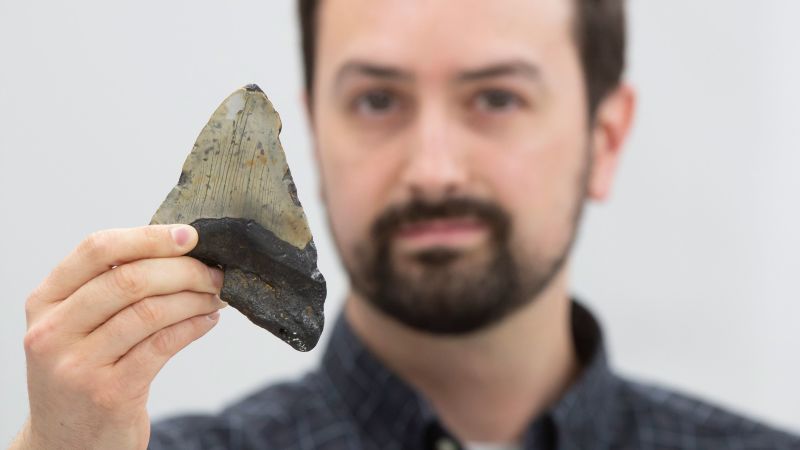
FRANKFURT, GERMANY – A groundbreaking study has upended long-held beliefs about the megalodon’s diet, revealing the ancient predator was more of an opportunistic feeder than previously thought.
Immediate Impact on Scientific Understanding
The megalodon, a colossal predator that roamed the oceans until about 3.6 million years ago, was once believed to have fed primarily on large marine mammals like whales. However, new research published in the journal Earth and Planetary Science Letters suggests a more diverse diet.
Lead author Jeremy McCormack, a geoscientist at Goethe University in Frankfurt, Germany, explained that the megalodon likely consumed a variety of prey to meet its massive 100,000-calorie-per-day requirement. “When available, it would probably have fed on large prey items, but when not available, it was flexible enough to feed also on smaller animals,” McCormack noted.
Key Details Emerge from Fossil Teeth
The study involved geochemical analysis of minerals in fossilized megalodon teeth, revealing regional differences in feeding habits. This finding suggests the ancient shark pursued whatever prey was available in local waters, from top predators to smaller creatures.
“They were not concentrating on certain prey types, but they must have fed throughout the food web, on many different species,” McCormack said.
The research team utilized zinc isotope analysis to determine the megalodon’s diet. Zinc, essential for living organisms, provides clues about the diet through its isotopic composition in tooth enamel.
By the Numbers: Zinc Isotope Analysis
The study found that megalodon’s zinc isotope ratios were closer to lower-tier animals, indicating a varied diet.
McCormack’s analysis showed that megalodon was not alone at the top of the food chain. It shared this position with other “opportunistic supercarnivores,” including its close relative Otodus chubutensis and the lesser-known Araloselachus cuspidatus.
Expert Analysis and Industry Response
Paleobiologist Kenshu Shimada, a coauthor of the study, suggested that the rise of the great white shark may have contributed to megalodon’s extinction. “Our new study demonstrates the ‘diet overlap’ between the great white shark and megalodon,” Shimada explained, emphasizing the competitive pressure from the more agile great white shark.
Jack Cooper, a UK-based paleobiologist not involved in the study, remarked, “The general picture of megalodon has been of a gigantic shark munching on whales. This study adds a new dimension that megalodon probably had a wide range of prey.”
Background Context and Historical Comparisons
Previous research has challenged assumptions about the megalodon’s size, shape, and biology. While some studies suggested it was three times as long as a great white shark, others hypothesized even larger dimensions, up to 80 feet in length.
Alberto Collareta, a researcher at Italy’s University of Pisa, highlighted the importance of ongoing research. “These studies have led us to abandon traditional reconstructions of the megatooth sharks as ‘inflated’ versions of the modern white shark,” he said.
What Comes Next for Megalodon Research
The latest findings provide a snapshot of the marine food web from 20 million years ago and suggest that megalodon’s diet varied between different populations, similar to today’s great white sharks.
As the scientific community continues to explore these prehistoric ecosystems, the hope remains that new fossil discoveries will further illuminate the mysteries of the megalodon. “What I’d really love to see emerging from ‘the foggy ruins of time’ is a complete Meg skeleton,” Collareta added.
The study represents a significant shift in understanding the megalodon’s ecological role and reinforces the dynamic nature of scientific inquiry.







